What is Candida?
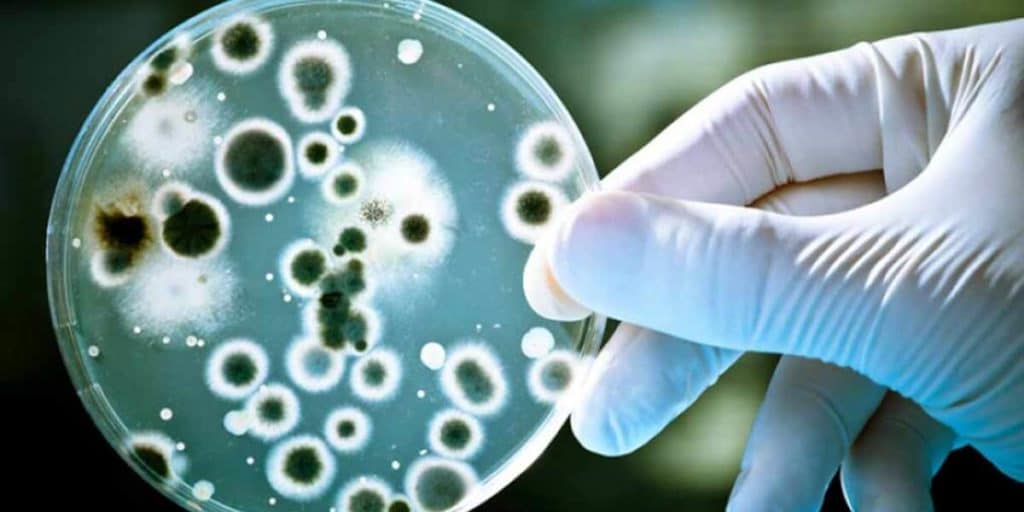
A fungus is a microscopic organism that typically lives harmlessly in people. However, if your inner ecosystem is out of balance and your immunity is weakened, you are at risk for a fungal infection, like Candida (also known as a yeast infection).
A single-cell organism, Candida reproduces asexually and thrives on some of the body’s byproducts: dead tissue and sugars from food. Unless its environment is altered and its source of food is eliminated, it quickly monopolizes entire body systems, such as the digestive tract, and causes moderate to severe symptoms.
In patients with weakened immune systems, like those with AIDS or cancer, Candida in the bloodstream can (and often does) become the actual cause of death. Dr. Andrew Koh, Assistant Professor of Pediatrics and Microbiology at the UT Southwest Medical Center, estimates that for a cancer patient with a Candida infection in the bloodstream, the fatality rate is roughly 30 percent.
6 Most Common Types of Candida
Of the 150-plus species of Candida, six are frequently associated with human infections:
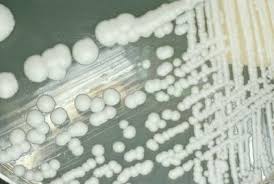
Candida albicans
This is the most common species to cause yeast infections, responsible for about 50% of all candidiasis occurrences. Candida albicans is opportunistic in nature, so if your immune system is compromised, or your “good bacteria” population is reduced by antibiotics, high-stress levels, excessive “bad” carbohydrate intake or hormonal imbalance, Candida albicans will seize the opportunity to overgrow, wreaking havoc in various parts of your body.
Common symptoms include fatigue, bloating, flatulence, anxiety, depression, vaginitis, itchy skin, impaired memory, poor concentration, and a “foggy” brain. Left untreated, Candida albicans overgrowth can lead to systemic infection via the bloodstream, allowing numerous disease processes to occur. Most of the autistic kids have an overgrowth of yeast.
There are various treatments to reduce Candida albicans overgrowth, including prescription and over-the-counter antifungal medications, herbal supplements, natural remedies, healthy dietary and lifestyle changes.
Candida tropicalis
The second most common species, Candida tropicalis is believed to be responsible for up to 30% of Candida bloodstream infections (candidaemia). Overgrowth usually occurs in the gastrointestinal tract and on the skin of people with diabetes mellitus, leukemias, and lymphomas, causing an array of issues including diarrhea, excessive gas, stomach cramps, and skin irritations including relentless itching, eczematous rashes, and hives.
Candida tropicalis can also cause vaginal candidiasis, symptomized by intense vaginal itching, abnormal thin watery discharge, pain when urinating, redness and swelling of the outer genitals. Overgrowth can also cause nervous system disorders resulting in depression, anxiety, headaches, and memory loss.
While Candida tropicalis is not as aggressive as Candida albicans, it’s becoming more resistant to antifungal drugs such as Flucytosine, making it more difficult to treat. Fortunately, there are several new generation antifungals that have been found effective when combined with a balanced treatment regimen including supplements and dietary/lifestyle modifications.
Candida glabrata
With the increased use of immunosuppressive agents, mucosal and systemic infections caused by Candida glabrata have increased significantly in recent years, according to NIH.* Estimated to be involved in 10-30 percent of yeast infections, Candida glabrata can cause oral thrush, which presents as creamy white, slightly raised lesions in the mouth. This can result in painful or difficult swallowing, or fever if the infection spreads beyond the esophagus.
Thrush can affect anyone, though it occurs most often in babies, toddlers, older adults, and people with immune deficiencies. Left untreated, thrush can spread to other parts of the body including the lungs and liver of immunocompromised people.
Treatment modalities include various antifungal agents combined with supplements, nutritional and lifestyle modifications.
Candida parapsilosis
Candida parapsilosis is believed to be involved in up to 30 percent of Candida infections, notably nail and tissue infections, and fungemia (fungal blood infection). Candida parapsilosis can cause severe flu-like symptoms, chronic fatigue, and systemic infections, most often in immune-impaired people. Its high resistance to antimicrobial drugs is causing concern in hospitals, primarily in Europe. As with the aforementioned species of Candida, a comprehensive treatment approach is necessary to regain good health.
Candida krusei
A rare species, Candida krusei accounts for approximately 1% of candidiasis and is usually associated with infant diarrhea and sometimes systemic candidiasis. Although it’s resistant to Fluconazole, Candida krusei can be successfully treated with antifungal medications including Amphotericin B. in addition to a holistic regimen.
Candida lusitaniae
Another rare species responsible for about 1% of Candida infections, Candida lusitaniae has been linked to several cases of candidemia blood infections, as well as systemic candidiasis, including sepsis and pyelonephritis, a potentially serious kidney infection. Fluconazole is an appropriate choice as first-line therapy for Candida lusitaniae, combined with dietary and lifestyle modifications.
There’s no “magic pill” or instant solution for beating candidiasis, despite such commonly advertised claims targeting today’s instant-results mentality. The only way to win the battle is with a diligent multifaceted approach that addresses the root problems and corrects them over time. Candidiasis can be beaten if you’re persistent with your treatment and make the lifestyle changes necessary to accelerate your recovery. It’s up to you.
Candida and Autism

Candida yeast overgrowth also known as Candidiasis is often a contributing factor in Autism. Dr. Crook talks about it in the Yeast Connection book and most enlightened practitioners are aware as well. Poor bowel ecology is commonly found in autistic children and Candida is one of the culprits. However, keep in mind that mainstream physicians are not informed about Candida and will deny it has any role.
Some physicians believe Candida is a primary cause of Autism, while others believe it is one of many factors that exacerbates Autism. Whatever the case may be, most autistic children respond favorably to Candida treatment and achieve improvement in symptoms. For some, improvement may be mild while for others it may be drastic.
One of the main organs that Candida impacts are the brain, which results in neurological and behavioral symptoms that are often seen in Autism.
However, most often Candida is just one nail in the shoe. There are usually a variety of factors involved, such as unidentified food allergies or food sensitivities, environmental toxins and vaccinations, gluten intolerance, nutritional deficiencies, leaky gut, bacterial overgrowth, parasites, and heavy metal toxicity.
One of the biggest contributors to Autism is a build up of toxins in the body that come from vaccinations, additives and preservatives in food, flu shots, pesticides in food and the environment etc. Children are being exposed to too many toxins and their body can’t detox them.
These toxins build up in the body and the brain and cause behavioral and neurological symptoms. Mercury is one of the most common toxins to be accumulating and believed to play a major role in Autism.
Why is it important to eliminate certain food allergens like milk protein casein, sugar and gluten important part of treating autism?
Casein
Casein is the protein found in cow’s milk and human milk. Researchers found that the traces of cow’s milk had a chemical that looked like morphine. Morphine, as we all know, is a highly addictive opiate. Casein, which is the milk protein breaks down during digestion and releases lots of opiates called casomorphins which are also histamine releasers. This is the reason why so many people are allergic to dairy.
In children with autism, allergic foods will develop a high level of opiates in the bloodstream which increases autistic behaviors which includes less desire to communicate socially and increases confusion.
Sugar
Elimination of sugar and limiting simple carbs is a very important part of stabilizing blood sugar as they have a damaging effect on the gut flora and the immune system. This is because an autistic child has a different gut flora than a non-autistic child.
Yeast or candida feeds and grows on sugar. When the sugar is eliminated from the diet, it causes Candida die-off. This is also called the Herxheimer reaction. The Candida yeast releases 79 different toxins when they die, which includes a production of ethanol and acetaldehyde.
Gluten
Elimination of gluten helps because gluten causes inflammation in children with autism who already have a leaky gut. Parent’s with kids who had autism reported a remarkable improvement in their children’s behavior, attention, and speech when they eliminated gluten from their diets. The reason behind the elimination of gluten from the diet is that autistic kids lack the enzymes to break down the protein in wheat. As a result, they are broken down to exorphins, or group of opioid peptides also called peptides with morphine like activity, that form during digestion of the gluten protein. This results in abnormal behavior in autistic kids.
Removing toxins and correcting deficiencies
Because of the fact that the children with autism have certain genetic deficiencies which results in low levels of glutathione and cysteine, they cannot detoxify the heavy metals like mercury they accumulate in the body, causing high toxic levels of these metals.
Detoxifying from these metals become very important. At the same time, children with autism are deficient in certain vitamins and minerals. It is important to test for these deficiencies and correct them.
Causes Of Candida
Firstly, it’s important to realize that everyone has Candida. It is a micro-organism that is naturally present in your gut, part of the balanced system that helps you to digest food and stay fit and well.
When people talk about Candidiasis the illness, they are really talking about the excess growth of Candida. So if Candida is not something that you ‘catch’ like a virus, what are the causes of this excess growth of Candida?
Candida has only recently been recognized by the medical community, but there has been a surprising amount of research conducted into this illness. The consensus is leaning towards a handful of medical and lifestyle factors that seem to be triggers for a Candida overgrowth.
What causes Candida to grow out of control?
There are several things that support a Candida overgrowth and thus lead to an imbalance. Some of them include:
- Blood sugar imbalances – Poor insulin receptivity of the cell or other reasons that keep sugars in your bloodstream too long.
- Bacterial imbalance.
- Overuse of antibiotics without replacing lost beneficial bacteria (probiotics). (All my life I had been off and on antibiotics till my early 30’s). I’m now 43.
- Birth control pill (I took for over 10 years when I was on it – have been off it since age 29).
- A nutrient-poor diet that is rich in refined carbohydrates (pasta, potatoes, rice, etc.), processed foods, cola drinks, etc.
6. A compromised immune system
7.Heavy metals in the body. (Mercury fillings feed candida).
8. STRESS! depletes everything in the body on a physical, cellular and energetic level.
What are the common symptoms of candida?
- Skin and nail fungal infections, such as athlete’s foot or toenail fungus
- Feeling tired and worn down, or suffering from chronic fatigue or fibromyalgia
- Digestive issues such as bloating, constipation, or diarrhea
- Autoimmune diseases such as Hashimoto’s thyroiditis, rheumatoid arthritis, ulcerative colitis, lupus, psoriasis, scleroderma, or multiple sclerosis
- Difficulty concentrating, poor memory, lack of focus, ADD, ADHD, and brain fog
- Skin issues like eczema, psoriasis, hives, and rashes
- Irritability, mood swings, anxiety, or depression
- Vaginal infections, urinary tract infections, rectal itching, or vaginal itching
- Severe seasonal allergies or itchy ears
- Strong sugar and refined carbohydrate cravings
- Lack of sleep and poor sleeping patterns. These two things (stress and poor sleep) in particular will compromise your good bacteria balance, as well as your blood sugar balance.
Candida Spit Test
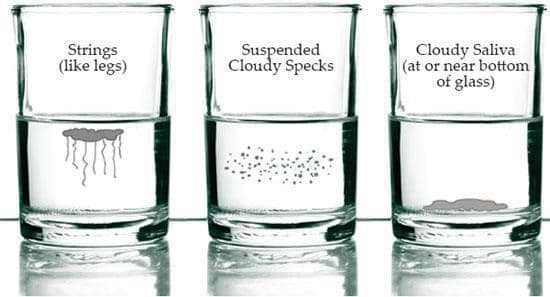
This is an easy way to test for yeast overgrowth in your gut. When you wake up in the morning (before you eat or drink anything or brush your teeth) fill a glass with room temperature water. Then work up at least a dime-size amount of saliva in your mouth and spit it into the glass of water. You will be watching what happens over the next 30-45 minutes, looking for where the saliva goes.
- If it grows tentacles that hang down toward the bottom you have some candida in your gut that likely needs to be addressed.
- If it stays on top it indicates that there is not excessive mucous in your mouth harboring candida.
- If it sinks to the bottom you likely have significant candida overgrowth in your gut and you need to take action.
Top Foods to AVOID if You’ve Got Candida
Aged Cheeses & Dairy Products: Conventional dairy contributes to inflammation, and many people are dairy sensitive. Raw dairy is ok occasionally if you’re not sensitive. Fermented dairy (kefir, preferably raw) is ok occasionally if not dairy sensitive, but dairy contributes to dampness in the body.
Additives & Preservatives: Anything you can’t pronounce on a food label = trouble.
Conventional Meats & Eggs: Use only grass-fed meat products, free-range eggs, and chickens. Non-organic animal proteins contain.
Antibiotics and steroids that contribute to inflammation.

Alcohol: Sugar in the alcohol (wine, beer, spirits) is greatly loved by candida albicans, so don’t feed the beast!

Over-use of coffee: coffee is acidic, depletes minerals and thins the gut lining. Use green teas and herbal teas.
Chocolate: The sugar along with the fermentation process feeds the Candida, so avoid chocolate during the diet.
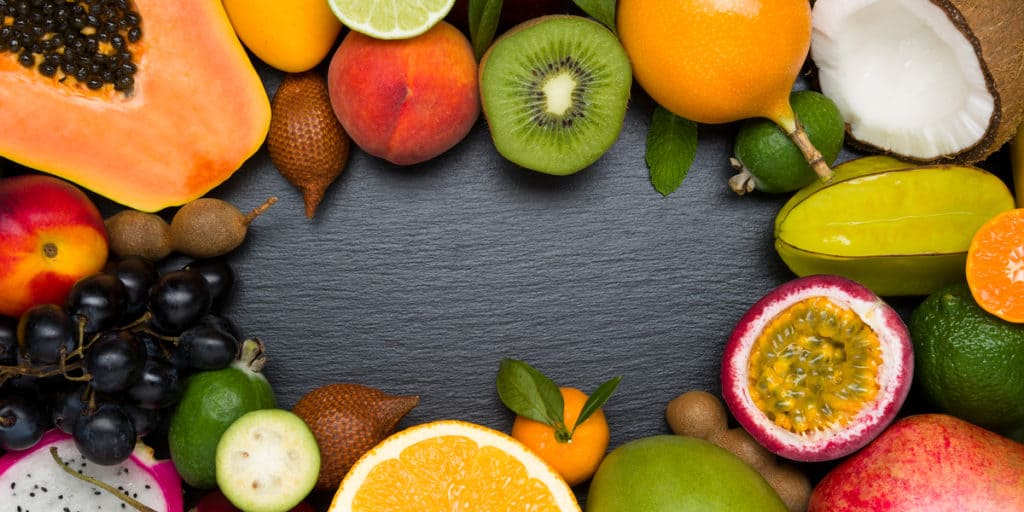
Fruits: The high sugar contents of fruits make Candida thrive; so stay away from sweet fruits! (Exceptions are berries when in season, and in moderation.) Absolutely no fruit juices of any kind.
Gluten & Grains: Avoid anything made from wheat, rye, barley, and oats. Avoiding all grains (including corn) is advised.
Peanuts: Peanuts carry a mold called aflatoxin that contributes to toxins in the body.
Mushrooms: Mushrooms are fungi, which encourages damp conditions and fungal overgrowth.
Condiments, kombucha, and YEAST in any form: Condiments (chutneys, mustards, preserves, ketchup, relishes, vinegar, bottled dressings, etc.) tend to be high in sugars, corn syrup, and preservatives. Vinegar feed yeast. Kombucha is fermented and aggravates yeast overgrowth.
Here are the top 10 home remedies for Candida.
Garlic
Garlic has a number of sulfur-containing compounds that give it natural anti-fungal properties that help fight Candida infections.
- It’s a good idea to include garlic in your regular diet due to its many health benefits. You can have two to four raw garlic cloves a day. Crushing the cloves first helps release its beneficial properties.
- If you do not like the taste of garlic, you can take garlic supplements. The dosage usually depends on the severity of the condition, but the general recommendation is 600 to 900 mg daily.
- You can also apply raw, crushed garlic cloves on the affected area.
Coconut Oil
Coconut oil works as an effective remedy for candidiasis due to its medium-chain fatty acids like lauric, caprylic and capric acid.
Studies show that these saturated fats have antimicrobial properties that help kill Candida fungi without leading to the development of strains of Candida that are more resistant to other antifungal treatments.
- Apply coconut oil topically on the affected area three or four times a day until you see improvement.
- You can also include it in your daily diet. Start with one teaspoon of organic virgin coconut oil daily, gradually increasing the dosage to up to three tablespoons per day.
Yogurt
The probiotics present in yogurt, especially yogurt with live cultures, are helpful in fighting off candidiasis or yeast infection. The Lactobacillus acidophilus culture, in particular, keeps Candida yeast in check by producing lactic acid.
- Make plain yogurt with live lactobacillus acidophilus part of your daily diet.
- To treat a vaginal yeast infection, you can apply it by inserting a tampon dipped in yogurt. Do this two times a day until the infection clears.
Tea Tree Oil
Tea tree oil is another effective natural cure for candidiasis as it has antifungal and antibacterial properties.
- For vaginal yeast infection, put several drops of tea tree oil on a tampon and insert it. Replace it every four to six hours.
- For oral thrush, add five to seven drops of pure tea tree oil to a cup of water and gargle with it for a few minutes twice daily until the infection clears. Do not swallow the solution.
Oil of Oregano
Oregano oil contains a compound called carvacrol that has been found to inhibit the growth of Candida yeast. Scientific studies also found that the oil’s antifungal and antimicrobial agents can be effective in treating as well as preventing candidiasis.
- Mix three drops of oregano oil with one tablespoon of olive oil. Apply it on the affected area and leave it on for a few hours. Do this daily until you see improvement.
- Alternatively, mix three drops of oregano oil in a glass of water. Drink it twice daily for a few days to a week.
- If you are taking oregano oil capsules, take one or two capsules twice a day after meals. Continue the treatment for two to three months.
When purchasing oil of oregano, look for a product that does not contain alcohol and has a high level of carvacrol.
Apple Cider Vinegar
Apple cider vinegar is also considered beneficial for treating Candida infections as it helps restore your body’s natural pH balance.
It is also rich in enzymes that help regulate the presence of Candida. It creates an unfavorable environment for the fungi and encourages healthy gut bacteria to balance the flora in your intestinal tract.
- Add one tablespoon of organic raw apple cider vinegar to a glass of water. Sip it slowly before a meal. Do this daily until symptoms subside. Symptoms may worsen during the first few days due to the yeast dying off, but you will notice improvement after that.
- You can also apply apple cider vinegar on the affected area or mix one cup of it in warm bath water and soak in the bath for about 15 minutes. Do this daily for a few days.
Several over-the-counter treatments can clear the symptoms of a candida infection
Monistat
Monistat was made famous for its effectiveness at clearing away the symptoms of candida yeast infections. It is primarily used by women as a topical cream that is applied to the outer area of the vagina. It provides a soothing relief instantly on contact for burning and severe itching associated with vaginal candida infections. All symptoms of vaginal yeast infection can be cleared up within seven days of use. It is recommended that it be used for the complete length of time.
Tioconazole Ointment
Tioconazole is an over-the-counter topical cream that treats candida overgrowth. Its antifungal agents are able to kill off candida cells. It can be applied directly to the infected area of the skin or genitals. It can be used for vaginal yeast infections in women or in the folds of skin where candida overgrowth occurs.
AZO Yeast Tablets
AZO yeast tablets are effective because they treat current symptoms of candida. However, they also prevent future infections from reoccurring. The drug comes as an easy to swallow tablet that internally destroys candida overgrowth. It can be used as a preventive measure when there are no visible signs of a candida infection.
Polyene
Antifungals include nystatin and amphotericin B. Nystatin is used for thrush and superficial candida infections.
Talk to us for a natural solution for the elimination of candida from your autistic child.
Connect with us through our Facebook page at www.facebook.com/NAETDubai or visit: www.naetdubai.com. You will find a wealth of information here along with an opportunity to speak confidentially through WhatsApp 056-639 0197 or Phone Call 04-420 1633.
You may also email us at admin@naetdubai.com

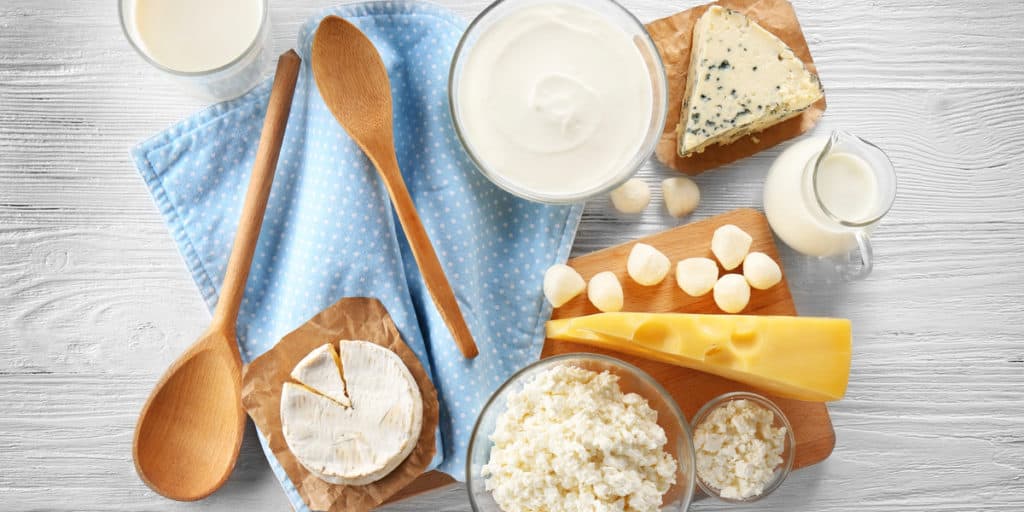



3 Responses
Please suggest natural ways to eliminate Candida.
Thank you so much for your comment. Please don’t forget to subscribe to our blogs. Feel free to contact us if you need any further information.
This text is priceless. Where can I find out more?